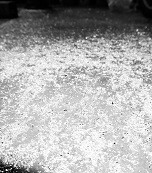(New?) Composite Panel Construction Technique
(New?) Composite Panel Construction Technique
What is the largest panel size you think you can produce like this on your garage setting? This is awesome stuff.
Sent from my iPhone using Tapatalk
Sent from my iPhone using Tapatalk
- redbicycle
- Teardrop Advisor
- Posts: 92
- Images: 0
- Joined: Sat Sep 08, 2018 5:38 am
Re: (New?) Composite Panel Construction Technique
redbicycle wrote:What is the largest panel size you think you can produce like this on your garage setting? This is awesome stuff.
Thank you. There are a couple of factors that will limit panel size...
First is the size of the mold surface, which could be glass, marble, granite or any smooth flat surface. I plan on using reclaimed patio door glass for my full-scale panels. Just remember that the largest panel that you can produce on any mold surface will be around 6" smaller in both dimensions because of the flange area needed around the panel to attach the vacuum bagging film.
The second limiting factor is that carbon fiber fabric comes on 50" wide rolls and the fabric has to wrap up and around the wood frame and back onto itself. That's 1" up on the outside of the frame + 1/2" on top of the frame + another 1" down the inside of the frame + at least 1" back onto itself. That comes out to 3.5" per side, or 7" total, making 43" the widest carbon fiber panel width.
With that said, you could potentially push it to 48". If I were to go that wide, here's what I would do... the edge of the 50" fabric would end at the top of the outside of the 1" tall wood frame - a narrow strip (~5") would have to be placed on the outside of the frame to overlap the end of the 50" fabric and wrap around the rest of the wood frame. I hope that makes sense. It would be a challenging layup, but I think it could be done.
Fiberglass, which also comes in rolls like carbon fiber would not have the same width limitation because any seams created by overlapping fabric would be hidden by the gelcoat.

Steve
Build Journal viewtopic.php?f=50&t=71138
Composite Panel Construction Technique viewtopic.php?f=21&t=71192
If women don't find you handsome, they should at least find you handy.
~Red Green
Composite Panel Construction Technique viewtopic.php?f=21&t=71192
If women don't find you handsome, they should at least find you handy.
~Red Green
-

StrongFeather - Teardrop Master
- Posts: 174
- Images: 30
- Joined: Wed Oct 10, 2018 4:38 am


 Up above one of the limitations for a panel size was the lack of available carbon fiber cloth wider than 50".
Up above one of the limitations for a panel size was the lack of available carbon fiber cloth wider than 50".  I bought 10 yards of 5.7 oz x 60" carbon fiber cloth from USComposites to build a teardrop.
I bought 10 yards of 5.7 oz x 60" carbon fiber cloth from USComposites to build a teardrop. 




